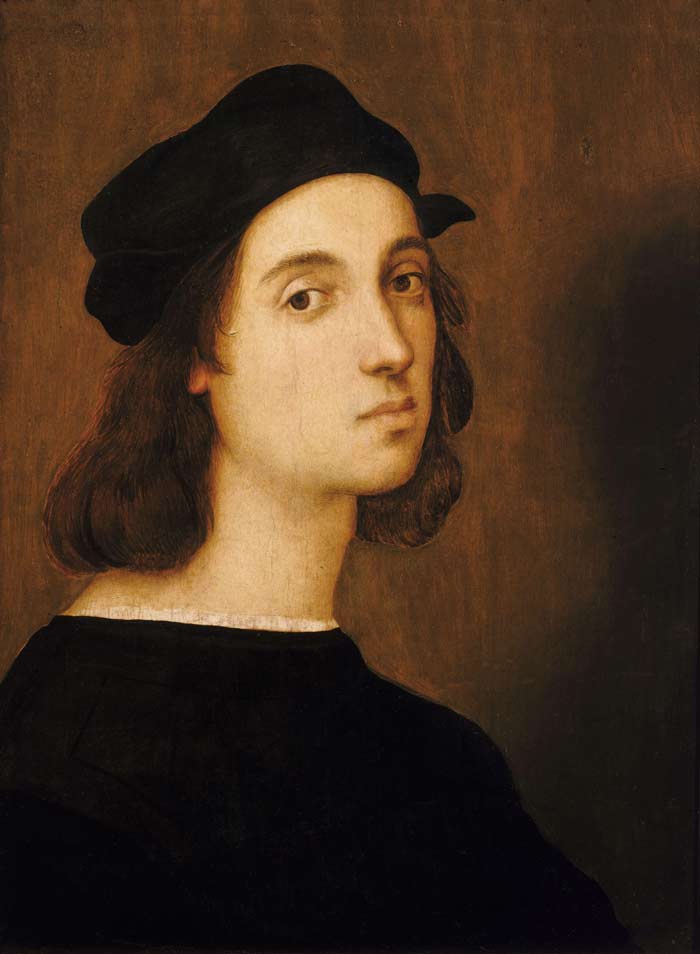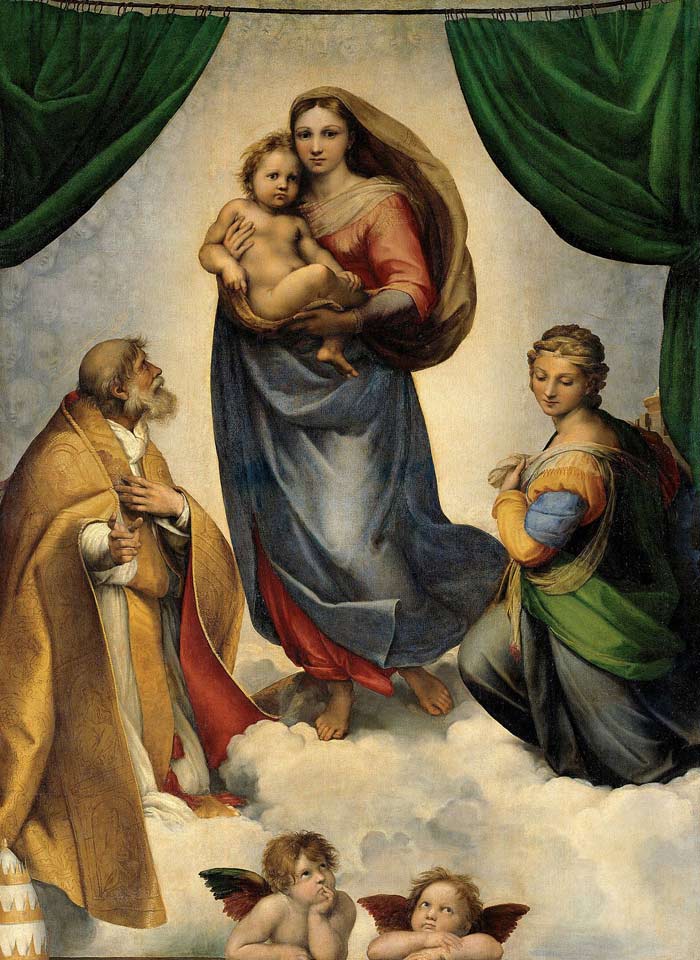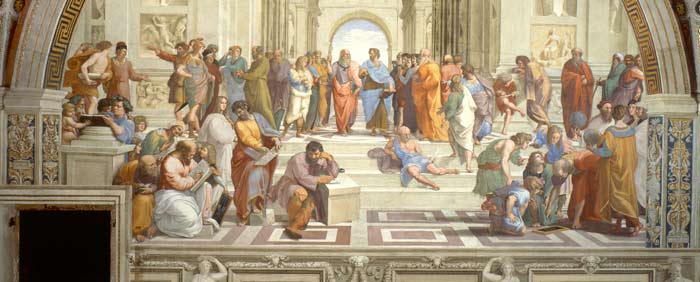Article by Mir
Raphael – The Maestro of the Renaissance

Raphael, born Raffaello Sanzio da Urbino in 1483, emerges as a shining star in the firmament of the Italian Renaissance, an era marked by a vibrant resurgence of culture and creativity. This article is a journey through the life and art of Raphael, an exceptional painter whose works continue to enthral and inspire audiences globally.
Early Life and Artistic Beginnings
Raphael’s journey into the world of art commenced at a young age. Left an orphan at the tender age of 11, he found solace in the workshop of the esteemed painter Pietro Perugino in Perugia. This period became the crucible in which the young Raphael honed his skills and began to forge the techniques that would come to define his art.
During these formative years, Raphael exhibited an extraordinary aptitude for absorbing and adapting the styles of his contemporaries. He incorporated the influence of Pietro Perugino’s gentle and harmonious compositions, along with the innovative techniques of illustrious artists such as Leonardo da Vinci and Michelangelo. This remarkable ability to assimilate various artistic elements would go on to characterize his work.
Raphael’s Artistic Evolution
Raphael’s art underwent a captivating transformation as he transitioned from his early works in Perugia to his transformative period in Florence. It was during this prolific phase that he created some of his most celebrated paintings, including “The School of Athens” and “The Sistine Madonna.”

“The School of Athens,” an iconic masterpiece housed in the Vatican, serves as a testament to Raphael’s skill in harmonizing diverse elements. In this fresco, he ingeniously brings together philosophers and scholars from different epochs, creating a visual representation of intellectual history. The artwork’s flawless perspective, classical architecture, and meticulously balanced composition reflect his innate ability to synthesize intricate ideas into visual form.
The Madonna: An Enduring Theme
Throughout his career, Raphael consistently returned to the theme of the Madonna and Child. His depictions of the Virgin Mary radiate grace, serenity, and maternal tenderness. These paintings not only showcase his technical brilliance but also his capacity to imbue his subjects with profound emotional depth.

In “The Sistine Madonna,” one of his most celebrated works, Raphael captures the Virgin Mary and the Christ Child in a moment of ethereal beauty. The painting’s gentle, almost dreamlike quality has endeared it to generations of art enthusiasts, making it an iconic representation of the Madonna in Western art.
Portraiture: Capturing the Essence of Humanity
Raphael’s portraiture stands as a testament to his ability to encapsulate the essence of his subjects. His portraits transcend mere likenesses; they serve as windows into the souls of the individuals he depicted.

One of his notable portraits, “Portrait of Baldassare Castiglione,” exemplifies his mastery of this genre. The subject, a diplomat and author, is portrayed with such depth and humanity that the viewer can almost discern his thoughts and personality. It is as if Raphael possessed the power to freeze moments of introspection and reveal them to the world through his brush.
The Vatican: A Monument to Genius
Raphael’s association with the Vatican marked a zenith in his career. Commissioned by Pope Julius II, he was entrusted with the adornment of the papal apartments, which included the renowned Raphael Rooms (Stanze di Raffaello). Here, he showcased his artistic virtuosity through frescoes that celebrated the realms of theology, philosophy, and literature.
One of the most renowned frescoes within the Vatican is “The School of Athens.” This monumental work features a congregation of philosophers and thinkers from antiquity, each painstakingly portrayed. The painting represents a harmonious synthesis of classical ideals and Renaissance humanism, exemplifying Raphael’s ability to transcend time and capture the intellectual spirit of his era.
Legacy and Influence
Raphael’s influence on the world of art is immeasurable. His innovative techniques, mastery of perspective, and profound insight into human emotion set the stage for generations of artists who followed. His work laid the foundation for the flourishing of High Renaissance art and continues to serve as an enduring source of inspiration for artists and art enthusiasts alike.
A Journey into Raphael’s World
To truly appreciate the genius of Raphael, one must visit the Vatican Museums in Rome, where many of his masterpieces are on display. Standing in the presence of his works is akin to embarking on a journey through time, experiencing the Renaissance through the eyes and brushstrokes of this remarkable artist.
Conclusion
Raphael’s art stands as a testament to the limitless potential of human creativity. His capacity to harmonize diverse influences, infuse his subjects with emotional depth, and capture the intellectual and spiritual essence of his era positions him among history’s most celebrated artists. Raphael’s legacy endures not only in the masterpieces he left behind but also in the enduring influence of his artistic vision on the world of art. His works continue to remind us of the profound beauty and depth that can be attained through the creative spirit, inviting us to contemplate the timeless essence of human existence through the brushstrokes of a divine artist.





